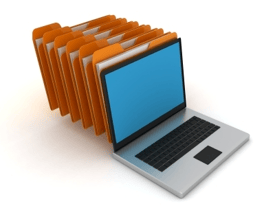 With all that we’ve been reading about alleged LTC Medicare fraud, overbilling, claiming more services than that which were actually provided, giving incorrect treatments, or up-coding Medicare claims, it’s hard for providers not to feel like a target. Therefore, on behalf of those who are trying to do their best in a world of changing rules, retro reviews, and the dramatic expansion of diagnostic codes, we cry, “Enough already!” We want to speak out for all providers who are doing their best and are NOT trying to rip the system. We believe that the majority of providers operate with integrity and with the intent to provide service consistent with each resident’s needs. Personally, I take exception to any outcry that providers are gaming the system before all the evidence is in place – makes good headlines, but poor policymaker/provider relationships and certainly LOUSY policy.
With all that we’ve been reading about alleged LTC Medicare fraud, overbilling, claiming more services than that which were actually provided, giving incorrect treatments, or up-coding Medicare claims, it’s hard for providers not to feel like a target. Therefore, on behalf of those who are trying to do their best in a world of changing rules, retro reviews, and the dramatic expansion of diagnostic codes, we cry, “Enough already!” We want to speak out for all providers who are doing their best and are NOT trying to rip the system. We believe that the majority of providers operate with integrity and with the intent to provide service consistent with each resident’s needs. Personally, I take exception to any outcry that providers are gaming the system before all the evidence is in place – makes good headlines, but poor policymaker/provider relationships and certainly LOUSY policy.
ProClaim Partners has the opportunity to work with LTC providers managing numerous facilities across the country. Because we work directly with their billing staff and AR managers, we believe that they are doing their best to meet the real needs of their residents and are striving to make sure that the bills are clean and accurately represent the care given.
Having said that, do errors occur? Certainly. Years ago as an adult Boy Scout leader, I, along with others, maintained that scouting would be great…if it weren’t for the boys. Well, providers are in the people business employing people – fallible people. Operating a people business without the messiness of working with people would be great, but unreasonable and illogical. Despite providers’ best efforts with triple checks and even with their clinical applications screening the claims, we’ve discovered extra digits in Medicare numbers, invalid ICD-9 codes, etc.
My advice? Tell your story with claims that accurately reflect the care given and which are properly screened and scrubbed by members of your team (triple check), your clinical application, and a third-party automated claims management solution like ProClaim Partners. And tell your PR department to get off its duff and shout from the rooftops every day the wonderful things your facility and company are doing for the residents you serve, particularly if you are providing services to higher acuity residents. Tell your story. NO, tell your residents’ stories. It’s great press and a great buffer to the possible regulatory scrutiny and bad press that you could encounter in the future.
/Prime-Care-Technologies-Logo.png?width=191&height=55&name=Prime-Care-Technologies-Logo.png)

 Procurement automation has opened the door to opportunities not only to reduce costs, but to improve efficiency and to ensure quality consistency. Think of it this way, as the one responsible for your company’s purchasing practices, you have a lot on your plate. It’s one thing to negotiate purchasing contracts with vendors for all your food, medical supplies, office supplies, housekeeping supplies, and other supplies purchases. It’s another to make sure that those of your organization who place the orders actually receive the benefits from all your hard work. This is where Order Guide Management (OGM) comes in. In short, OGM is the ability to control which products your users have access to according to the terms negotiated.
Procurement automation has opened the door to opportunities not only to reduce costs, but to improve efficiency and to ensure quality consistency. Think of it this way, as the one responsible for your company’s purchasing practices, you have a lot on your plate. It’s one thing to negotiate purchasing contracts with vendors for all your food, medical supplies, office supplies, housekeeping supplies, and other supplies purchases. It’s another to make sure that those of your organization who place the orders actually receive the benefits from all your hard work. This is where Order Guide Management (OGM) comes in. In short, OGM is the ability to control which products your users have access to according to the terms negotiated.
 Data mining represents wealth, a wealth of opportunity, action, and success. Directly put, data mining (the process of centralized data management and retrieval) helps LTC providers find hidden treasures of knowledge, not just data. Just as rare gems or precious minerals are only valuable when processed from the ore that is unearthed, so too is knowledge when refined from countless bytes of data. Refined data transformed into information becomes knowledge and knowledge – the power to act. Data mining, therefore, helps executives discover what is happening now, track trends, anticipate with some accuracy what may happen in the future, and explore the strengths of possible actions.
Data mining represents wealth, a wealth of opportunity, action, and success. Directly put, data mining (the process of centralized data management and retrieval) helps LTC providers find hidden treasures of knowledge, not just data. Just as rare gems or precious minerals are only valuable when processed from the ore that is unearthed, so too is knowledge when refined from countless bytes of data. Refined data transformed into information becomes knowledge and knowledge – the power to act. Data mining, therefore, helps executives discover what is happening now, track trends, anticipate with some accuracy what may happen in the future, and explore the strengths of possible actions. I would like to introduce Rand Johnson as the author of this, our latest blog.
I would like to introduce Rand Johnson as the author of this, our latest blog.